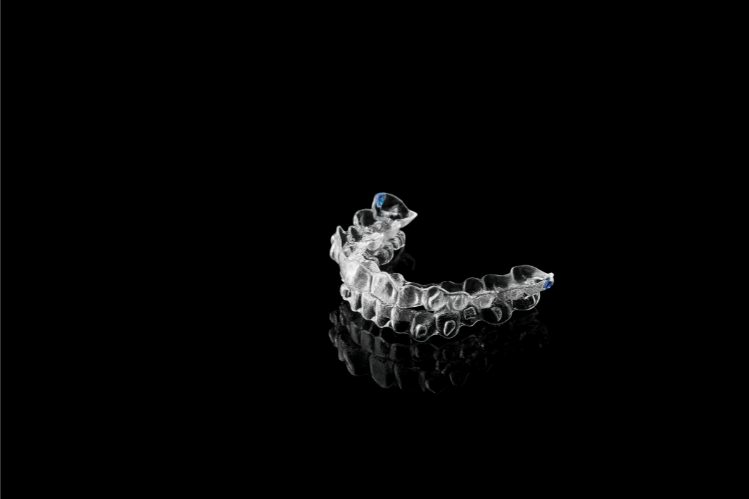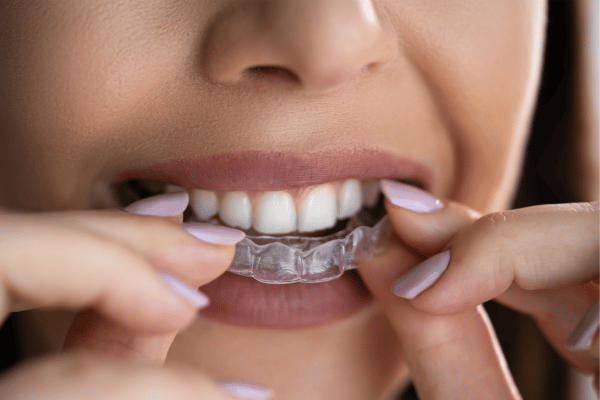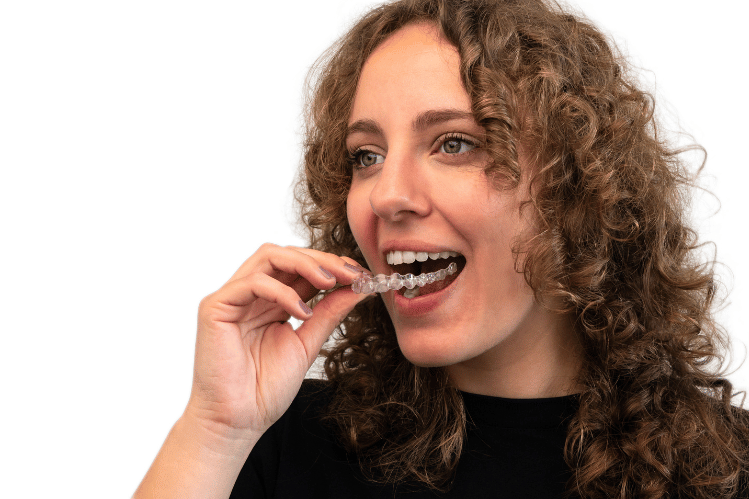
Retainers for teeth are essential for keeping your smile beautiful and healthy. This thorough guide covers every facet of retainers including types and benefits of clear retainers and maintenance tips.
Wearing Dental Retainers
Your orthodontist will urge you to wear dental retainers as soon as your orthodontic treatment is finished. The frequency of wear varies; usually and for the first several months. Also, it is worn full time before progressively switching to night wear. This procedure protects the newly positioned teeth and helps to avoid any recurrence or unwanted movement. Following your orthodontist's recommendations guarantees appropriate retainer use and protects the orthodontic treatment's outcomes.
Types of Dental Retainers
There are many types of dental retainers used worldwide. These are listed below to help you have a better understanding of them.

Fixed Retainers
A permanent option is fixed retainers, which are wire based and are cemented to the back of the front teeth. They are almost unnoticeable and quite successful at keeping the position of the front teeth in place but they cannot be taken out for eating or cleaning.
Removable Retainers
Removable retainers come in a variety of materials such as wire and clear plastic and can be removed for eating and cleaning. With the exception of meals and cleaning and are usually worn constantly since they are custom fitted to the teeth.
Clear Retainers
Clear retainers have become more and more popular in recent years because of their comfort and almost imperceptible appearance. These aesthetically pleasing custom fit retainers are made of transparent plastic and fit tightly over the teeth.
Advantages of Clear Retainers
1. Aesthetically Pleasing:
Clear retainers improve the appearance of the smile and are nearly invisible that makes them ideal for people who are self conscious about traditional wire retainers.
2. Pleasant:
Clear retainers provide a pleasant fit without causing discomfort because they are made of a soft and flexible material that is kind to teeth and gums. They are simple to remove so you can wash them with soap and water.
3. Effective:
By fitting tightly and obstructing any movement transparent retainers are just as effective as wire retainers in maintaining the placement of teeth.
Taking Care of Your Retainers

Observe these maintenance guidelines to prolong the life of clear retainers:
1. Clean Them Often
In order to frequently get rid of bacteria and plaque, remove and wash clear retainers with soap and water.
2. Keep Them Safe:
When not in use store clear retainers in a hygienic and secure location to avoid loss or damage.
3. Avert Hot Temperatures
Steer clear of hot environments to prevent retainers from distorting. Keep them somewhere dry and cool.
4. Keeping Your Smile
Retainers for teeth and especially clear ones are essential in maintaining an attractive and healthy smile. Clear retainers can last for years with proper care and maintenance and so your smile will always look its finest.
Use ALIGNERCO To Preserve Your Smile
Affordable at home teeth straightening is offered by ALIGNERCO. With your aligner plan, get your first pair of retainers. The SmileAdvantage Plan offers free set of retainers delivered to your doorstep for $845 to help you maintain a long-lasting smile.
Conclusion
In order to keep a straighter smile and protect the outcomes of orthodontic treatment, retainers are essential. There are distinct benefits associated with each type of retainer, including comfort, aesthetics, and efficacy, whether you choose transparent, removable, or fixed retainers. Maintaining your smile at its best for years to come can be achieved by making sure your retainers are properly cared for and maintained.
FAQs
1. How do dental retainers function and what are they?
Dental retainers are specialized post orthodontic appliances designed to hold teeth in place and stop them from moving back to their original positions.
2. Why are retainers required after receiving orthodontic treatment?
To preserve the effects of orthodontic treatment and stopping teeth from moving back to their original positions, retainers are necessary.
3. How frequently should I put my dental retainer on?
While the frequency of use varies, it is generally advised to wear it every night for the first six to twelve months. This is done after the treatment and before cutting back to preserve the effects of the treatment.
4. For what length of time must I wear a dental retainer?
Wearing retainers indefinitely is generally advised to maintain the outcomes of orthodontic treatment though this can vary in time.






